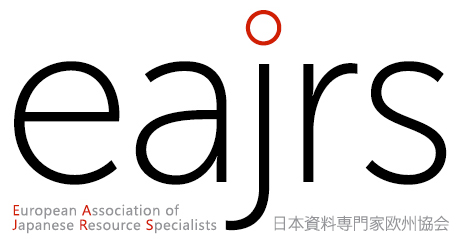![]() Miyamoto Yukiko
Miyamoto Yukiko
Osaka University. Associate Professors
大阪大学の文庫についてー国書データベースでの公開を踏まえて
近世期の大阪には、町人が教え、町人が学び、そして町人が出資運営する学問所が多くあった。緒方洪庵の適塾、中井履軒らの懐徳堂、平野郷の含翠堂などがその代表である。それらの流れを汲んで創立された国立大学が大阪大学である。
現在、大阪大学付属図書館には、複数の文庫が存在する。上記の三つの学問所の叢書も、大阪大学の複数学部や図書館、センターに分割されて収集されている。しかし、大阪の学問所の蔵書は質・量ともに膨大で未着手の研究の価値を残す知的遺産でありながら、多種多様な分野の内容であるがために、それらが包括されたことはなく、統一されたデータベースは存在しない。
また、既に電子化されている文庫のうち、国文学研究資料館の国書データベースから公開されているのは、赤城文庫(寛永10(1633)年から享保4(1719)年までに刊行された古浄瑠璃正本)、忍頂寺文庫、小野文庫(江戸時代の歌謡書、洒落本等)、笹野文庫(浄瑠璃本約200点)、適塾関係資料にとどまる。
そのため、画像公開されている資料を縦断的に利用すること等、これからの課題も多い。今回は、現状と今後の展望について報告したい。
About Osaka University's Collection - Based on the publication in the "National Institute of Japanese Literature Database" (created by NIJL)
In Osaka during the early modern period, there were many academic institutions where townspeople taught, townspeople learned, and townspeople financed and operated. The Tekijuku school of Ogata Koan, the Kaitokudo school of Nakai Kouken and others, and the Gonsuidou school of Hiranogo are representative of such institutions. Osaka University is a national university founded along these lines.
Currently, there are several collections in the Osaka University Library. The above-mentioned three collections of academic institutions are also divided and collected by several faculties, libraries, and research institutes of Osaka University. However, while the collections of the Osaka academies are an intellectual legacy that is vast in both quality and quantity and retains the value of unexplored research, because of the wide variety of fields involved, they have never been comprehensive, and no unified database exists.
In addition, of the bunko that have already been digitized, only the Akagi bunko (Ko-joruri Shohon), Oshinjoji bunko, Ono bunko (Edo period song books, stylish books, etc.), Sasano bunko (approximately 200 joruri books), and Tekijuku-related materials are available from the National Institute of Japanese Literature's Kokusho database.
Therefore, there are many issues to be addressed in the future, such as the longitudinal use of materials that have been made available to the public in the form of images. In this presentation, I would like to report on the current status and future prospects.
